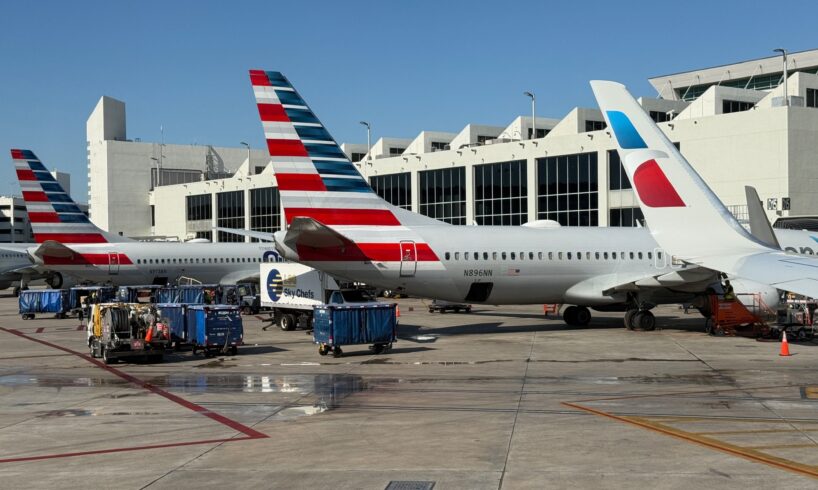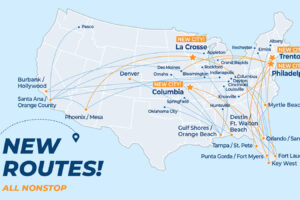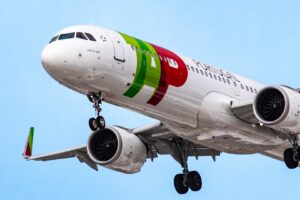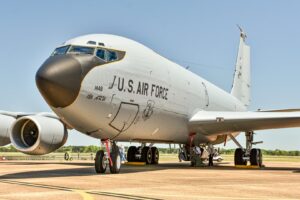
While American Airlines’ losses worsened in Q1, with revenues also decreasing slightly, its chief executive expressed confidence that the airline is positioned well for the future in light of the uncertainty faced by the economy and, by extension, the airline industry.
American Airlines
IATA/ICAO Code
AA/AAL
Year Founded
1926
Expand
American Airlines, which has not had a net profitable first quarter since 2019, posted a $473 million net loss, the worst net result of its main competitors in the US, with only Delta Air Lines and United Airlines being the only two profitable airlines in the country so far.
Positioned Well
Photo: Nate Hovee | Shutterstock
Robert Isom, the Chief Executive Officer (CEO) of American Airlines, stated that the actions that the airline has taken over the past several years, including its fleet refreshment, cost management, and balance sheet strengthening, position the carrier well for the uncertainty the airline industry is currently facing.
In Q1, American Airlines’ revenue decreased 0.2% year-on-year (YoY) to $12.5 billion, with operating expenses rising 2.1% YoY to $12.8 billion. The airline’s costs could have been higher if not for fuel and related taxes decreasing by 13.2% YoY to $2.5 billion, which comprised 19.5% of the airline’s total costs. As such, its operating loss was $270 million (Q1 2024: $7 million operating profit), and the company’s net loss was $473 million. At the end of the period, the company had $10.8 billion of liquidity, including cash, short-term investments, and undrawn capacity under revolving credit and other facilities, with debt repayments in Q1 being $1.2 billion. Its long-term debt at the end of Q1 was $24.7 billion, with total non-current liabilities being $41 billion.
“The resiliency of the American Airlines team, combined with the investments we have made to differentiate our network, product and customer experience, give us extreme confidence in our ability to navigate the current environment and deliver strong results for the long term.”
Fewer Passengers On Lower Capacity
Photo: Ritu Manoj Jethani | Shutterstock
During the quarter, the airline’s capacity, measured in available seat miles (ASM), was 0.9% lower, resulting in the airline carrying 56.3 million passengers, or 1.9% fewer than in Q1 2024. Load factors had also dropped, with American Airlines’ aircraft being, on average, 80.6% full during the three-month period (Q1 2024: 81.5%).
A bright spot was the carrier’s yields, which increased to 20.21¢ (Q1 2024: 19.94¢), while passenger revenue per ASM was 16.30¢, also slightly higher compared to Q1 2024’s figure of 16.25¢. Total revenue per ASM (TRASM) was 17.95¢, 0.7% higher YoY.
An interesting shift was in the airline’s number of departures, which are split between its regional and mainline departures. While mainline departures were slightly lower – 278,000, 4.3% lower YoY – its regional departures continued to close the gap as they grew 14.3% YoY to 250,000. Overall departures were slightly higher at 528,000 in Q1. At the end of the quarter, American Airlines had 985 mainline and 567 regional aircraft, compared to 967 and 550 aircraft in Q1 2024, respectively.
Related
American Airlines Is Still Righting The Ship After Distribution Strategy Fail
American Airlines executives detailed that they are still working with customers following their decision to abandon their direct sales strategy.
Positive Results In Q2
Photo: Wangkun Jia | Shutterstock
Still, despite the poor performance in Q1, which ended with the uncertainty still being mild, as Donald Trump, the President of the United States, still had not announced the 10% universal tariffs as well as individual tariffs that were later paused until July (except for Chinese imports), American Airlines expects that its operating margin in Q2 would be positive.
In its guidance, the carrier outlined that its capacity, measured in ASMs, would be 2% to 4% higher compared to Q2 2024, with revenue being either 2% lower or 1% higher YoY. Cost per ASM, excluding fuel and net special items (CASM-ex), should increase 3% to 5%. Adjusted operating margin should be between 6% and 8.5%, and adjusted earnings per diluted share (EPS) should be from $0.50 to $1.
With American Airlines’ results announcement, the airline joined the three other members of the US’ Big 4 carriers club that also published their Q1 results. Out of the four, two were profitable, namely Delta Air Lines (Q1 net profit: $240 million) and United Airlines (Q1 net profit: $387 million), while Southwest Airlines (Q1 net loss: $149 million) was also loss-making.






